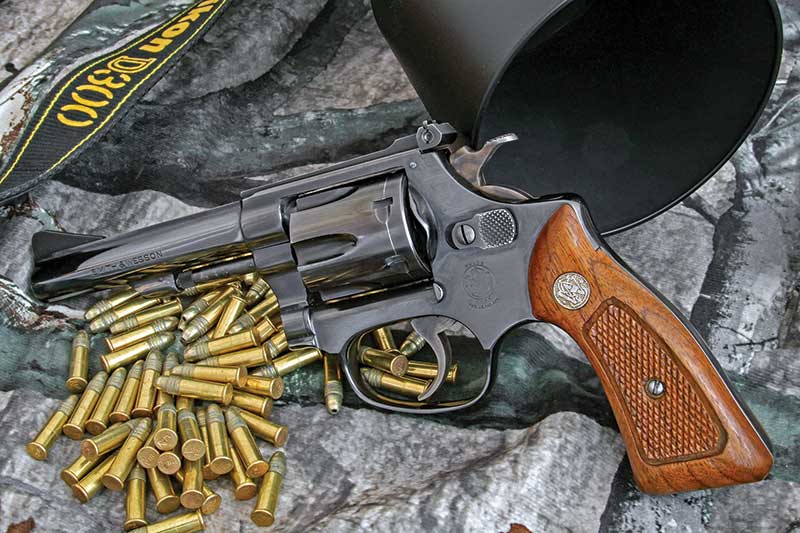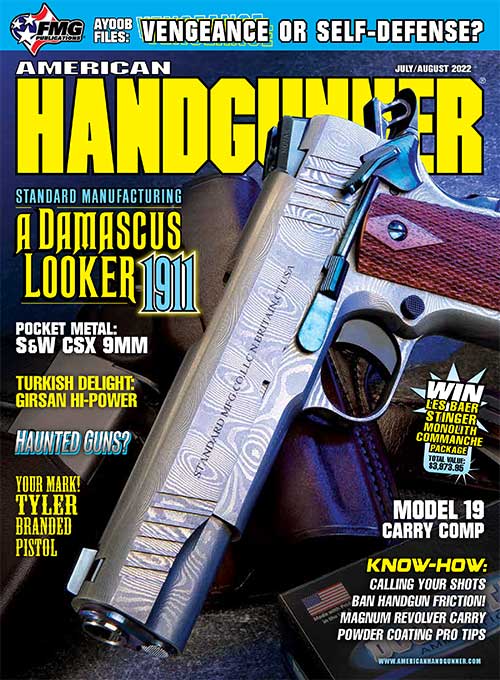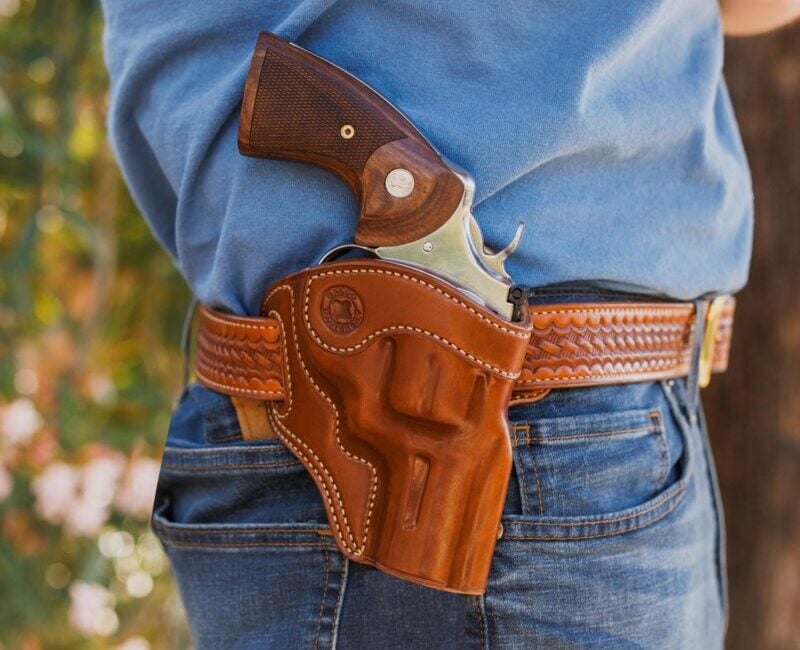Better Shooting: The Perfect Training Handgun — S&W K22
In the ’60s and ’70s, S&W had an ad for their K22 revolver with the headline “The Beginner’s Gun the Experts Can’t Put Down.” The K22 is a lot more than a beginner’s gun, but the novice handgunner who starts with a K22 is fortunate indeed. A K22 wasn’t the first handgun I owned — it was the third, as I recall — but it taught me more about shooting a handgun than any other before or since.
It seems the concept of learning the basics with a .22 has become old school. I get it. Many buyers want a handgun for defense and don’t like the idea of buying more than one. They buy a centerfire and they’re satisfied if they can hit a silhouette target at five yards.
I know of no better tool for learning handgun skills than a quality double-action revolver. For me, the K22 is about perfect. The first one I owned was a Model 17 made in the early 1970s. This was the model number assigned to the K22 when S&W introduced model numbers in 1957. The original K22/Model 17 revolvers weighed about 38 1/2 oz. The current Classic Model 17 weighs just under 40 oz., while the stainless 617 with a 6″ barrel is a bit over 44 oz.
Good options for shooters finding these a bit heavy are the model 63 with a 4″ barrel at just under 25 oz. and a personal favorite, the Ruger SP-101 .22 at 30 oz.
Here’s why I like the K22 and similar revolvers as training tools:
Trigger Quality
A cocked double-action revolver has about the best out-of-the-box trigger break available. With the K22, there is virtually no perceptible take-up, creep, or over-travel and the pull is consistent. Just index the sights on target and smoothly increase pressure until the shot breaks. If the only handgun you’ve shot is a service-style 9mm semiauto, experiencing a really good trigger pull is a revelation.
Adjustable Sights
I have nothing against fixed sights; in fact, I prefer them for applications such as concealed carry, provided they are correctly sighted. The novice shooter is much better served with easily adjustable sights, especially considering point of impact can change as the shooter learns a more consistent sight picture, hand position and grip strength, and trigger control.
Ammunition Versatility
For target shooting, plinking and training, I use and recommend standard velocity .22 LR cartridges. A revolver provides the option of using .22 Shorts or even CB caps if reduced noise is desired. It used to save money back when .22 Shorts were cheaper than Long Rifles. These days one can hardly find Shorts for sale, and if you do, they often cost as much or more. For small game hunting and pest control, high-speed Long Rifles are an option.
Grip Size And Shape
If the revolver has a fault, it is the grips used on older models, which left a big ditch behind the trigger guard. On my older guns, I often add a grip adapter. Current production revolvers have much-improved grip styles and there are many aftermarket styles. Most revolvers permit the shooter to easily fit grips to suit their hand size or add features such as finger grooves. Synthetic grips offer an alternative to wood.
Safety
I hesitate to say revolvers are safer than semiauto pistols. Strictly speaking, the shooter, not the gun, is safe or unsafe. Still, when a novice is shooting a handgun, I feel more comfortable if it’s a revolver. After firing a shot from a cocked revolver, the next shot can only be fired by a long, heavy pull or by cocking the hammer. After a shot is fired from a semiautomatic, the pistol is loaded, cocked, off-safe and ready to fire again with a short, light trigger pull.
One way around this is to load one cartridge at a time, which is a good idea for a novice with any handgun. This does get old in a hurry. I won’t make a huge issue of safety and the DA revolver — I can only point out my personal preference.
Fans of SA revolvers may feel I’m slighting their choice. Not at all; I would as soon teach with a single action. In some ways, it’s even safer since the hammer must be manually cocked for every shot. I prefer the DA since the SA pull is usually excellent, plus the shooter may someday want to acquire skill at DA shooting.







